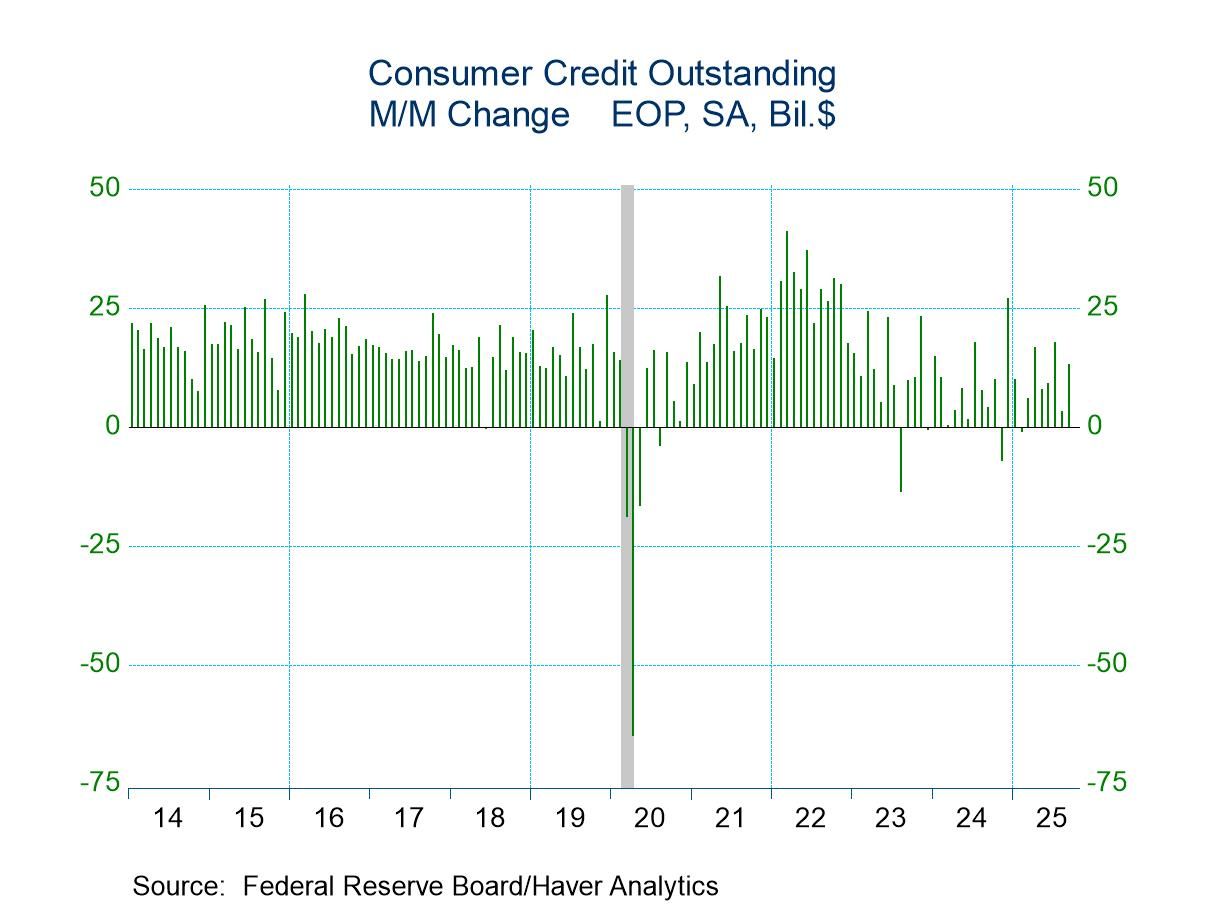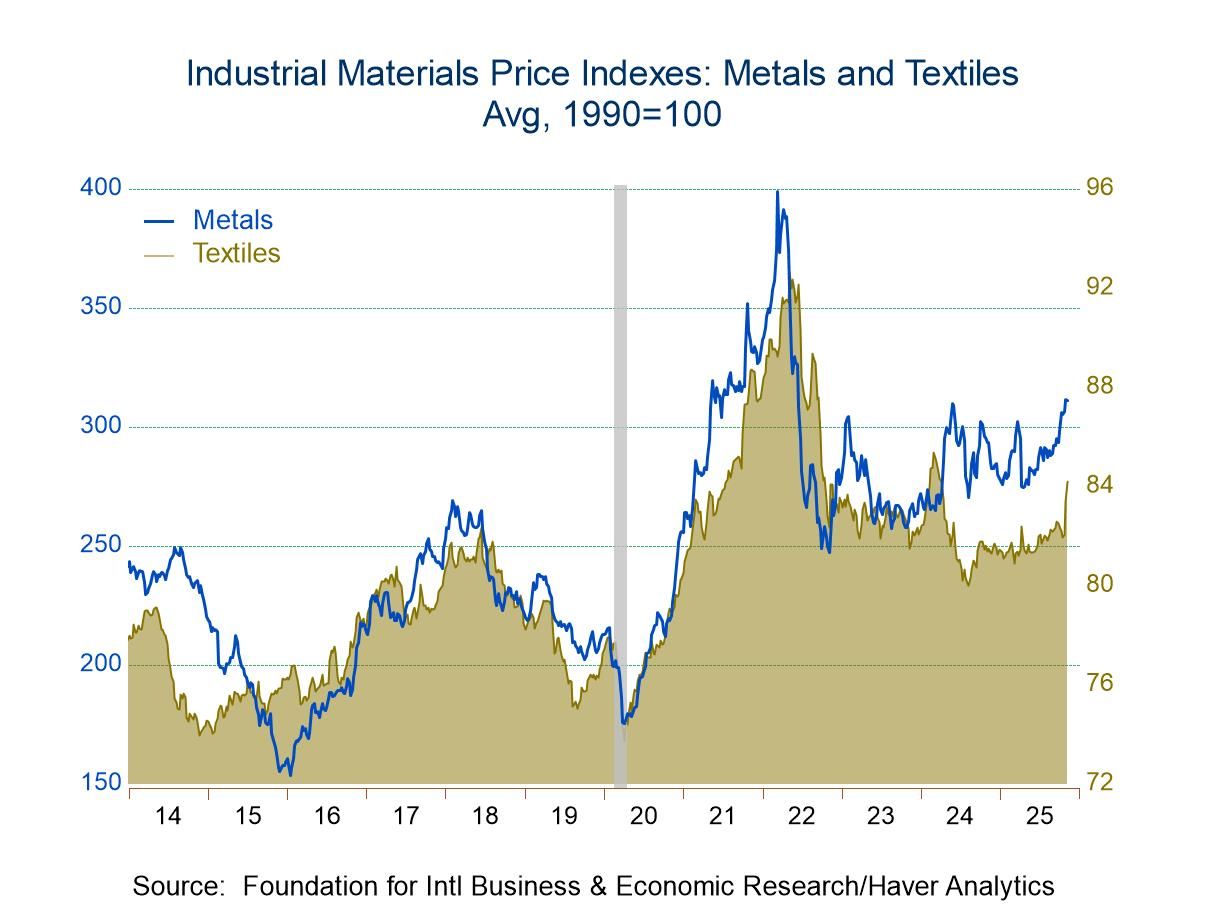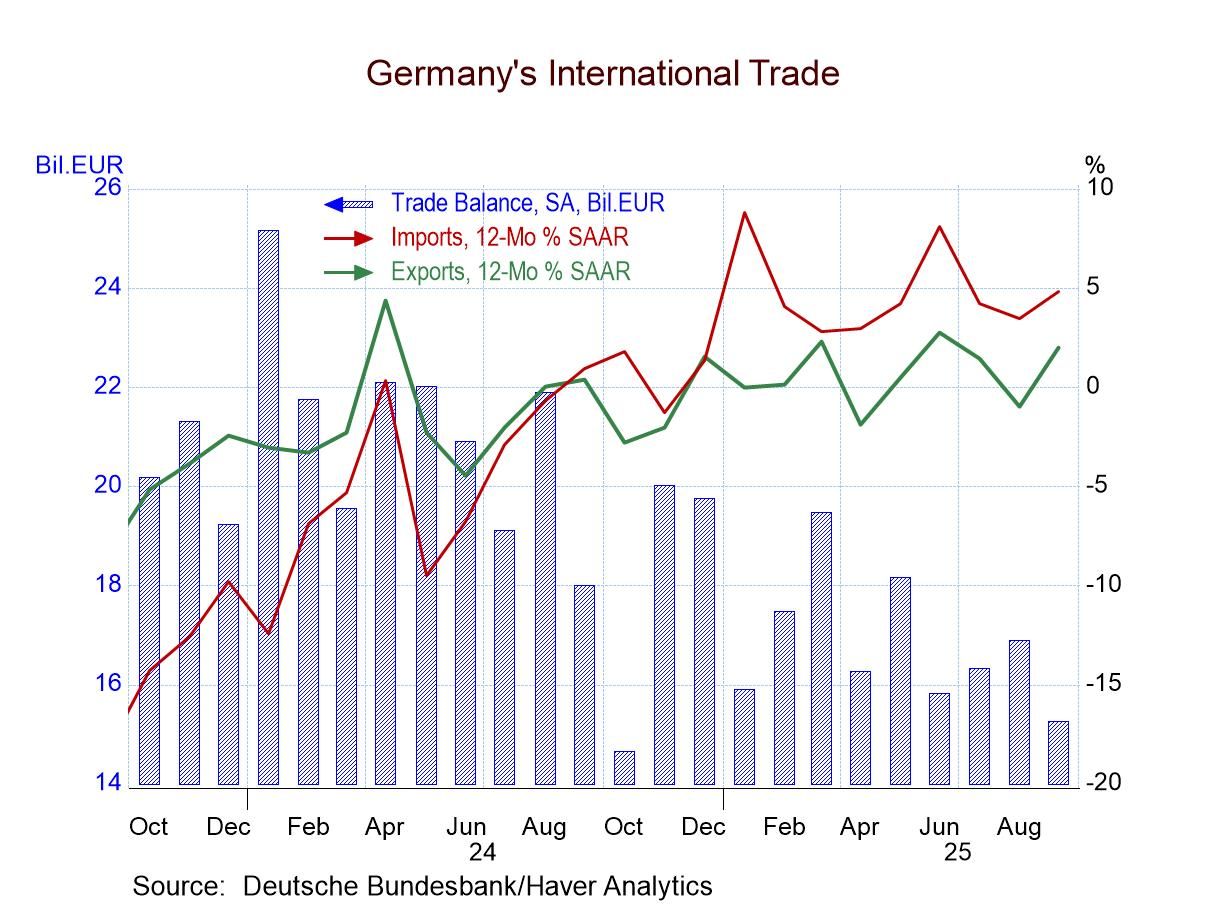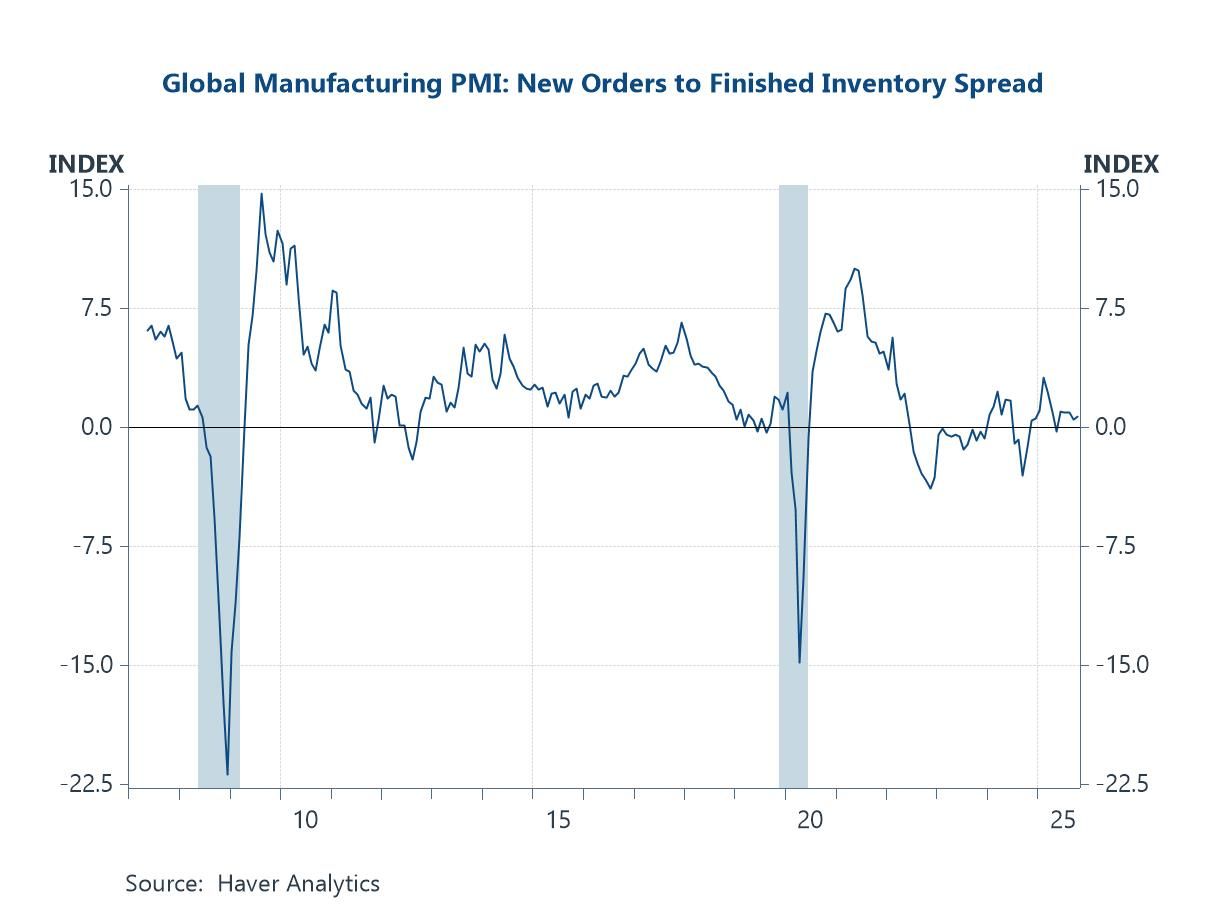 Global| Mar 29 2007
Global| Mar 29 2007Gasoline Prices "Spring Ahead"
Summary
Gasoline prices have started to rise again in earnest. In the week ended last Monday, March 26, regular gasoline was $2.61 a gallon, up 3.7 cents on the week and 22.7 cents from four weeks ago. From the same week a year ago, the price [...]
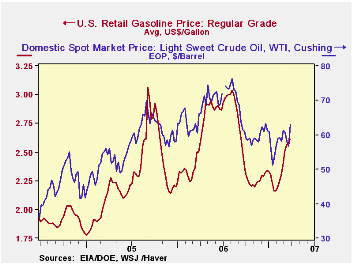
Gasoline prices have started to rise again in earnest. In the week ended last Monday, March 26, regular gasoline was $2.61 a gallon, up 3.7 cents on the week and 22.7 cents from four weeks ago. From the same week a year ago, the price is up 4.8%. Some of the gain is seasonal, some may also be related to international political pressures on oil markets, and some purely supply-and-demand.
On Tuesday, according to the BLS, the price of crude oil was $62.94 per barrel, up $6.20 from a low the week before and $1.47 from four weeks ago. Press reports this morning wonder if some recent firmness in oil relates to increasing tensions, particularly relative to Iran.
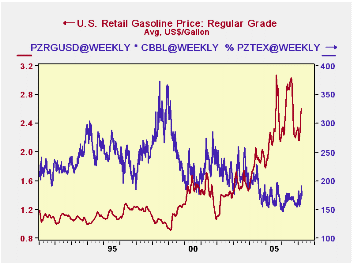 Mid- to late-January had seen a nice break in these markets (at least from consumers' viewpoints), as gasoline was flirting with $2.00/gallon and crude oil fell near $50/barrel. In this period, demand was relatively low and inventories relatively high, as gauged by "days' supply" of gasoline inventory, seen in the second graph. In the days' supply measure, gasoline stocks are compared with the volume of product supplied. This "inventory/sales ratio" is an excellent illustration of the seasonal effect. The graph makes plain that these weeks in mid-winter are always a high point for gasoline availability. In the first week of February, the ratio peaked at 25.0 days, compared with annual averages just above 22 days for each of the last two calendar years. The graph also shows, however, that the whole range of inventory adequacy has declined in recent years; in 2001, that mid-winter peak was 26.3 days and in 1999, it was 29.1 days. Demand appears not to have weakened so much in the winter as it used to.
Mid- to late-January had seen a nice break in these markets (at least from consumers' viewpoints), as gasoline was flirting with $2.00/gallon and crude oil fell near $50/barrel. In this period, demand was relatively low and inventories relatively high, as gauged by "days' supply" of gasoline inventory, seen in the second graph. In the days' supply measure, gasoline stocks are compared with the volume of product supplied. This "inventory/sales ratio" is an excellent illustration of the seasonal effect. The graph makes plain that these weeks in mid-winter are always a high point for gasoline availability. In the first week of February, the ratio peaked at 25.0 days, compared with annual averages just above 22 days for each of the last two calendar years. The graph also shows, however, that the whole range of inventory adequacy has declined in recent years; in 2001, that mid-winter peak was 26.3 days and in 1999, it was 29.1 days. Demand appears not to have weakened so much in the winter as it used to.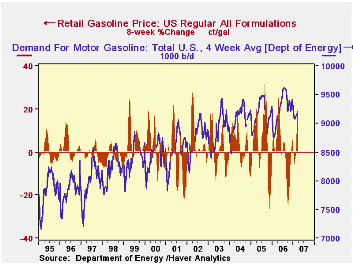
This pattern is well reflected in the behavior of prices. We examined the change in retail gasoline prices over 8-week periods in the spring each year beginning in 1995. Through 2001, the wintertime weakness in prices tended to continue through March; in a couple of those early years, strength in March was followed by a pause in April and May. But beginning in 2002, the spring price surge was well in train already in March; this year, the 8-week span ending March 23 saw a gain of 20.6%, the second largest in the comparable periods of all of the past 13 years.
| GASOLINE PRICES & DEMAND | 3/26/07 | 3/19/07 | 2/26/07 | 1/23/07 | 3/27/06 | Annual Averages||
|---|---|---|---|---|---|---|---|
| 2006 | 2005 | ||||||
| Retail Price, Regular Gasoline, $/gal | 2.610 | 2.577 | 2.383 | 2.165 | 2.498 | 2.572 | 2.270 |
| Spot Price, West Texas Intermediate, $/bbl | 62.94 | 56.74 | 61.47 | 53.90 | 66.08 | 66.10 | 56.47 |
| Gasoline Demand (000 b/d, 4-wk Avg) |
9,210 | 9,178 | 9,129 | 9,090 | 9,066 | 9,259 | 9,146 |
| Inventory: Days' Supply | 22.8 | 22.9 | 24.1 | 24.7 | 23.8 | 22.4 | 22.0 |
Carol Stone, CBE
AuthorMore in Author Profile »Carol Stone, CBE came to Haver Analytics in 2003 following more than 35 years as a financial market economist at major Wall Street financial institutions, most especially Merrill Lynch and Nomura Securities. She had broad experience in analysis and forecasting of flow-of-funds accounts, the federal budget and Federal Reserve operations. At Nomura Securities, among other duties, she developed various indicator forecasting tools and edited a daily global publication produced in London and New York for readers in Tokyo. At Haver Analytics, Carol was a member of the Research Department, aiding database managers with research and documentation efforts, as well as posting commentary on select economic reports. In addition, she conducted Ways-of-the-World, a blog on economic issues for an Episcopal-Church-affiliated website, The Geranium Farm. During her career, Carol served as an officer of the Money Marketeers and the Downtown Economists Club. She had a PhD from NYU's Stern School of Business. She lived in Brooklyn, New York, and had a weekend home on Long Island.


